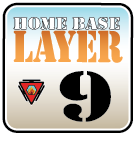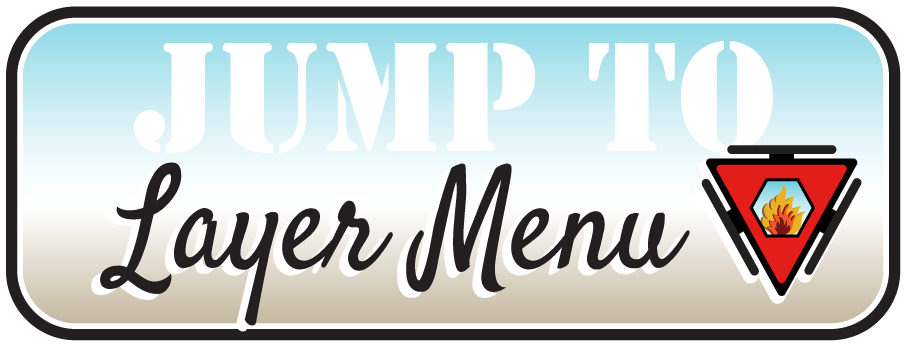Layer Nine, Week Four – Sunday
- Read Week Four Concepts
- Watch videos and read descriptions for Time is Relative – Take Two and Symmetrical, Asymmetrical.
- Do Movements – Time is Relative – Take Two and Symmetrical, Asymmetrical.
Sunday’s Focus
Explore the ways water moves. Feel for the physical properties and then see if you can identify the mental and emotional value you place on each. (Wash your car and feel the water absorb into your sponge, jet out of the hose, and rivulet down the windows. What emotions do each bring up?)
Sunday’s Concepts
This week, we will discuss some of the ways energy moves.
What I want you to get out of this, more than anything, is that energy is not two-dimensional (good/bad). If you learned and have come to believe that nonsense, disavow yourself of it this week!
Energy moves in endless ways including spherically, pushing, pulling, swirling, curving, repelling, attracting, stifling, compressing (linear, spherical, acute), opposing, resistant, fragmenting, lopsided, dispersed, vaporizing, welcoming, inspiring, and filtering.
That is a lot and the list really is endless, but this week’s examples will give you a good foundation. The key isn’t to be able to label the energy movement but to identify movement as it is happening and understand how energetic communication is a big part of every interaction.
Let’s start and use water as an example. On the gross level, water can transition from vapor to liquid to ice. You know water transitions to vapor when you see steam. You can watch the transformation as the water approaches boiling and then see the steam. If you watch long enough, the water in the pot will completely transform.
Have you ever wondered where the steam goes? The water turns to steam and then the steam becomes part of the air. Steam transitions from visible water vapor to invisible water vapor (humidity). The water vaporizes into steam and then the steam disperses into the air. Heat applied to water directly influences vaporization. Dispersion is passive, the steam absorbs and peacefully integrates into the air around it.
Water absorbs, splashes, flows, swirls, pushes, and pulls. Water resists (try walking in a waist deep pool). Super Soakers compress water. As water sloshes in a bowl, its weight shifts making the bowl feel lopsided. Water attracts other water, that’s what causes condensation.
Layer Nine, Week Four – Monday
- Read Monday Concepts
- Do Movements – Time is Relative – Take Two and Symmetrical, Asymmetrical.
Monday’s Focus
As you navigate through your day, feel for where your energies that radiate, push, and pull. How do your pulls feel different than other’s pushes? When you feel energy radiating, is it symmetrical or asymmetrical (lopsided)?
Monday’s Concepts
So, you are familiar with the types of water movement. Here is how they apply to energy.
Spherical energy movement radiates out in every direction. When you feel genuinely happy, you radiate joy in every direction. When you are happy about something or with someone, your happiness will radiate toward the object of your happiness. It may also radiate in every other direction, but the energy will be a lopsided sphere. A child tantruming (may have invented a new word) is energy radiating out spherically. It is expansive and directionless.
When the child is tantruming about not getting something specific, they are focusing their energy on the loss. The energy is still radiating but the child directs a good portion of their tantrum toward the object.
Expansion isn’t always beneficial and is rarely perfectly symmetrical, You usually assign a label to every expansion that distorts the symmetry of the expansion.
Pushing and pulling energy is very directional. Demands and expectations will always have a pulling or pushing quality. Always. If you can feel a pull or a push, you will know there is an expectation present. I want is a pulling energy. I don’t want is a pushing energy. Revulsion is a powerful directed pushing energy and radiates secondarily. When you find something repulsive, you primarily want to distance yourself from the object, but also want to get everything else away to some degree.
Layer Nine, Week Four – Tuesday
- Read Tuesday Concepts
- Do Movements – Time is Relative – Take Two and Symmetrical, Asymmetrical.
Tuesday’s Focus
Find things that trigger your curiosity, fascination, and wonder. Feel for how your energy swirls. See if you can track where and how the energy moves. Feel for building and waning momentum.
Tuesday’s Concepts
Curiosity, fascination, and wonder are great examples of swirling energy. Picture yourself opening presents as a child. Your energy and attention flows around all the wrapped boxes. When you start to open one, your energy flows around it, swirling and contorting as you rip the wrap. If it is a pair of black cotton socks, your fascination fades pretty quickly. If it is the latest greatest techno gadget, your fascination and curiosity get more focused and your energy swirls in a tighter vortex.
Wonder is a more passive swirling. As my mind searches for examples of wonder, I can feel it swirling around past experiences without landing, like a kid running through a candy store not knowing where to start. Wonder is an amazing mix of confusion and awe. Awe inspiring views, creations, and movements bring so much sensory awareness that focus diffuses.
Swirling energies can happen when something overwhelms your senses without a fear trigger. I am a member of several motorcycle centered pages on Facebook. Pictures and videos of classic motorcycles or custom motorcycles fascinate me. My energy swirls around lightly touching on every aspect from color to design to functionality to creativity to originality to value. I wonder about the how, why, and what.
Curving energy flows can happen when intentions and attentions wane. Distractions curve energy. Curving energy happens to me often in Home Depot. I go in with a clear intention and find myself pulled toward a gas-powered snow blower on my way to pick up a HVAC filter. I will fulfill my intention but it won’t be in a straight line.
Food choices at restaurants can bring about curving energies. You may set an intention to stay within a price range or healthy parameters and then you find yourself pulled slightly off course.
Layer Nine, Week Four – Wednesday
- Read Wednesday Concepts
- Do Movements – Time is Relative – Take Two and Symmetrical, Asymmetrical.
Wednesday’s Focus
Distractions shift your attention away from your objective and intention. Feel how this influences your energy flows. Can you feel the energy begin to curve?
Wednesday’s Concepts
Attracting energies are pulling energies without a specific target. Kelly and I have an intention to bring The Change Militia to a lot of people but not any specific people. We configure our energy and the energy of our course to attract people that are looking to expand themselves in a healthy way at their own pace so that they can beneficially influence the world around them.
Attracting energies create a vacuum, a space less dense than the surrounding space. Attracting energies give some place for resonate energies to land, find safe harbor, and expand without fear.
Welcoming, open-hearted, and hospitable energies are attracting.
Inspiring energies are attracting energies that also cause a lopsided expansion. When inspired, you expand with a bias toward the source of your inspiration.
The thought of running an ultramarathon, something over 30 miles, intrigues me. I get inspired when I watch YouTube videos of Ultra races and racers. I don’t get motivated to do push-ups or change the oil in my moto, I want to run up and down mountains for hours and hours. The videos pull and push me toward trail running.
Stimulating, sexy, and alluring are also attracting. Sexual energy is very reactive. You can be turned on by someone that doesn’t know you exist and has no reciprocal energy. You react to an energy that they are radiating.
Here is the difference. Energies that invite create space (vacuum). Energies that excite create an expanding resonance in the audience. Excitement is reactive. It expands from some internal resonance like fear, pleasure, or challenge. Invitations create a shared expansion.
Flirting as an example: When you flirt, you flirt specifically. You might be flirting with a group, but it isn’t universal, it is targeted. Flirting directs energy at an audience and creates space for the reaction. Have you ever watched people flirt? Watching feels very different because the energy isn’t directed at you. Seduction is a reactive energy. It looks to generate a reaction by pushing energy at a target and then allowing some space for a response.
Layer Nine, Week Four – Thursday
- Read Thursday Concepts
- Do Movements – Time is Relative – Take Two and Symmetrical, Asymmetrical.
Thursday’s Focus
Attracting energies generate vacuum fields. When you find yourself attracted to something, feel for the vacuum. Find things that attract you and try to identify specific things and the space that draws you.
Thursday’s Concepts
Have you been around anyone looking for a fight? How do you think the energy is moving?
It is a pushing energy with a specific quality or resonance. It is energy looking for a particular push reaction. Depending on the person and the situation, the fighter might be looking to punish or be punished.
A bully’s energy is a push energy looking for any type of energy that will react in a way that creates distance. Bullies bully because they fear judgment, ridicule, and rejection. They are in a constant state of fear. They configure their fear in a modified fight (push) configuration. They want to push people who won’t push back. Have you ever seen a bully take on someone with a fiercer desire to fight?
Guilt and grief can cause a pushing energy. Some people with guilt or grief look to create confrontation to generate rejection. Guilt and grief both generate a ton of potential. When you are overwhelmed with the potential changes guilt or grief entail, you might try to diffuse those feelings of overwhelm by projecting them into your environment.
Pushing energies try to create distance. A cheating spouse might be more unkind to a partner than is historically typical for their relationship. Guilt might drive him or her to increase the distance with the belief that distance will mitigate the pain of the guilt. They want to lower the proximity of the pain trigger.
Guilt and grief can also cause a pulling energy. A grieving spouse may pull others into his or her orbit, wanting to feel an increased closeness or presence to replace what was lost. Comforting energy will be a response to a pull. Cheating spouses might pull as a counter to their shame and remorse, they will pull to comfort their internal guilt. They use the energy of the spouse they are cheating on to help them feel less bad about cheating.
Layer Nine, Week Four – Friday
- Read Friday Concepts
- Do Movements – Time is Relative – Take Two and Symmetrical, Asymmetrical.
Friday’s Focus
How is your energy moving when you are lying? Catch yourself in a lie and then pull out your energetic forensic kit. Refer to Friday’s Concepts, if necessary.
Friday’s Concepts
Let’s take the energy configuration of the cheating spouse and for simplicity sake, let’s assume it is a man.
Scenario #1 – He lies to his wife and says he must work late. How do you think his energy configures when he is lying? Spherical, pushing, pulling, swirling, curving, repelling, attracting, stifling, compressing, opposing, resistant, fragmenting, lopsided, dispersed, vaporizing, welcoming, inspiring, or filtering? See if you can feel it in your body. (No coincidence that lying is today’s focus) Put yourself in the place of the lying spouse.
Think about your intention (if you were the cheating spouse). Your intention is to deceive. You want your wife to believe you are working late when you are not. Which of the ways above could you immediately cross off? Spherical, attracting, welcoming, inspiring, and filtering, probably. You might be pushing or pulling her toward the story you created. You might curve your energy away from your true objective. You might project some anger onto your job to misdirect and shift the energy away from your fabricated story (lopsided). You would compress and stifle your anticipation of the tryst. Your energy would fragment. Part of you would be thinking of telling an effective lie. Part of you would worry about future repercussions. Part would be projecting the sexual benefits. Part of you might be feeling guilt, shame, or remorse.
Deceit is complicated. Transparency is not.
A non-cheating husband talking to his enthusiastic wife about getting busy when he gets home from work is simpler. Their energies expand spherically. The energy swirls between them with the pleasure possibility. It is inspiring, welcoming, and balanced. It radiates between them encouraging intimacy and playfulness. It is an invitation.
Layer Nine, Week Four – Saturday
- Read Saturday Concepts
- Do Movements – Time is Relative – Take Two and Symmetrical, Asymmetrical.
Saturday’s Focus
Explore what nervous feels like. What does the transition to nervous feel like in your body? How does your emotional posture change? What happens to your mental components? Where is your center point when nervous?
Saturday’s Concepts
You can feel yourself shift from one configuration to another. You can feel the transitions. You know what it feels like to get nervous, mad, confused, and hungry. You get mad which indicates that you weren’t mad and then you became mad. That transition is what we will play with this week. Let’s use a hypothetical situation where you might get nervous.
You are about to give a speech to the Greater Jerkmanistan Chamber of Commerce about the need for all sentient beings to live harmoniously. At some point, you transition from not nervous to nervous. It might be the instant you agree to speak, on the way to the venue, or just as the Grand Poohbah is introducing you to the congregated chunder-headed chorizo-chomping card-carrying carnivores.
Your energy moves (transitions) from not nervous to nervous. What changes? You might have several degrees of nervous, each with their own transition.
The transition to nervous takes time; even when it may seem instantaneous. It takes time because the energies must shift. They redistribute between the bodies and the components. They change location, orientation, and trajectory. They transform from one way of being to another and that movement takes some measure of time. Last week, we talked about relative time.
Using the list of movements, spherical, pushing, pulling, swirling, curving, repelling, attracting, stifling, compressing, opposing, resistant, fragmenting, lopsided, dispersed, vaporizing, welcoming, inspiring, or filtering, what happens when you shift to nervous?
First, you know that nervous is a defensive posture. Your systems are preparing for an attack. You are nervous because of what you think/predict/project might happen. When you are defensive, one of the things you will do is attempt to generate some defensible space around you, you repel.
Second, you direct (push) your attention (energy) toward the threat. This is fascinating too. Your subconscious mind convinces you that you are not safe in your own body. So, you project your energy into the threat space (you act as if you are giving the talk before you are actually giving the talk). You shift your center completely out of your body and then try to re-center to this fictitious future place. Nervous isn’t about right now, it is about some other time. See if you can feel that in your body.
Third, you compress your energy internally (that creates the nervous feeling). Butterflies in your stomach is the feeling of energy compressing in your solar plexus.
Fourth, you generate an energy field to oppose the threat. Fifth, your energy might disperse into a hundred different scenarios.
Nervous is a fear response that burns a ton of energy without benefit while lowering your presence and awareness. It lowers or eliminates your ability to be intimate and connected. The solution is to stay ahead of the fear.
Okay, still believe that energy is either good or bad? Energy moves. Next week, you will find out how to get ahead and stay ahead of your fears. Stay tuned!
Time is Relative – Take Two
Step 1 –Pick some physically challenging shape like a squat, push-up position, isometrically pulling your hands apart, or isometrically pushing your palms together. Anything that is stationary and physically taxing will work.
Step 2 – Feel for the changes (energy movement) in your emotional body. Feel your emotions arise, well up, or shift.
Step 3 – Find a posture that allows stillness and feel your emotional body.
Step 4 – In both examples, feel for the way your emotions move. What path do they take? What are the qualities of the movements. Compare the movements to the descriptions in this week’s concepts.
Why it Matters – Understanding your emotional time will help you understand how you limit yourself physically and mentally. When your emotional hourglass expires before your other bodies, you disengage. Feeling relative emotional time will allow you to choose to remain engaged when it is beneficial.
Everyday Usability – Having a conversation with someone and feel yourself wanting to run? Check in with your emotional clock. Working out and want to quit? Dieting and can’t tolerate your hunger? Is intimacy an issue? Check your emotional clock.
Progression – Next week, we will play with balancing the clocks between your bodies.
Symmetrical Asymmetrical
Step 1 –Come up with two scenarios. One specific and one general. With each, bring it to mind, connect to the emotional component and allow the energy to expand.
Step 2 – The specific example (going riding with the Bros tomorrow) will have centers that do not align. One part of my expansion centers around my love of riding and the other centers around the specific ride. My energy will expand in both places. The shape of the energy might resemble a peanut in the shell.
Step 3 – The general example will be non-specific. It won’t connect to anyone else, an upcoming or past event, or a label, category, belief, or image. It’s shape will be spherical, like a ball … but not a football … unless you mean non-American football.
Step 4 – In both examples, feel for the way your energy expands. What path does it take? What are the qualities of the movements. Compare the movements of expansion in each meditation.
Step 5 – In the specific example, try to feel how the expansion of the object outside of yourself becomes its own entity. Feel for how you connect to it. Which bodies connect?
Why it Matters – Understanding the qualities of expansion will allow you to feel the difference between general and specific. What is you and what is not you. How you energetically connect to ideas, projections, beliefs, and habits.
Everyday Usability – Feeling the difference between aligned and non-aligned expansion will help you discern objectivity and subjectivity. Do you love donuts because they are magically delicious or because they help you feel less lonely, less overwhelmed, or more in control? When you can feel what specifically is expanding, you will understand your motivations.
Progression – Next week, we will play with feeling the expansion of others.

















